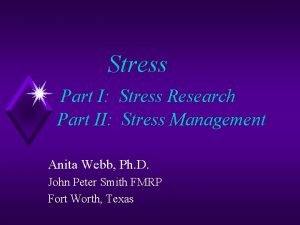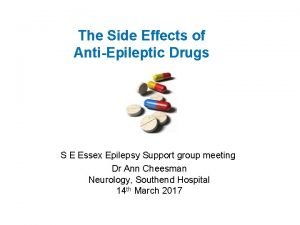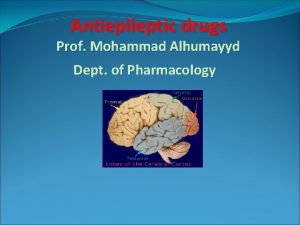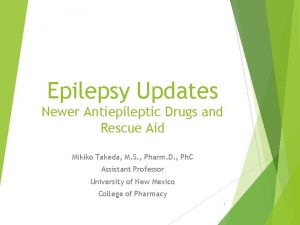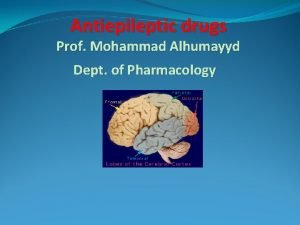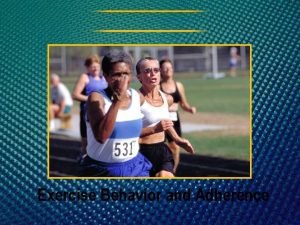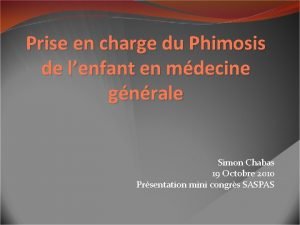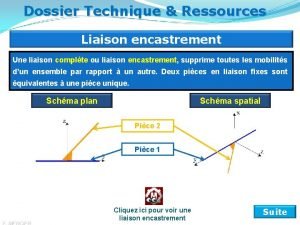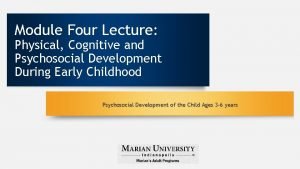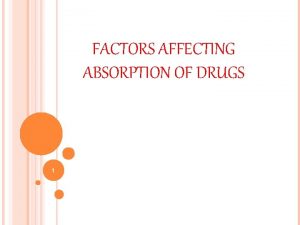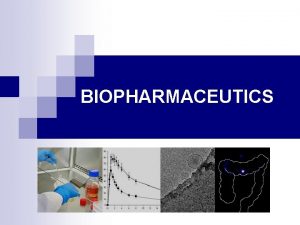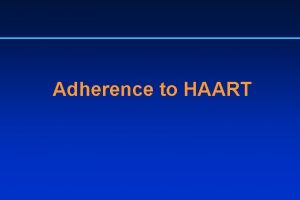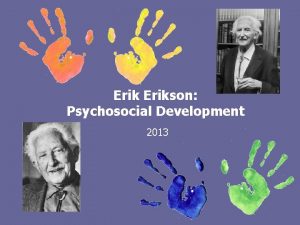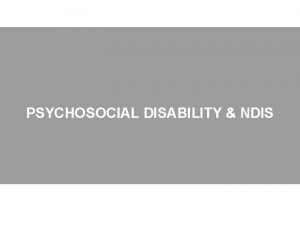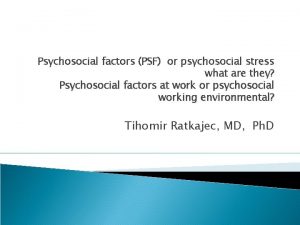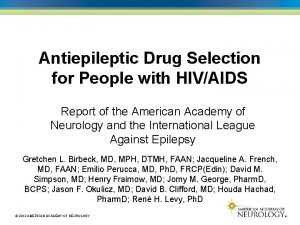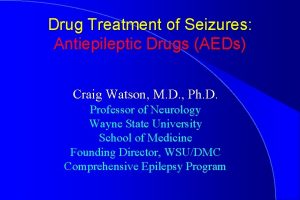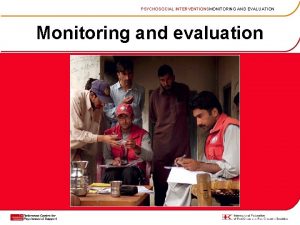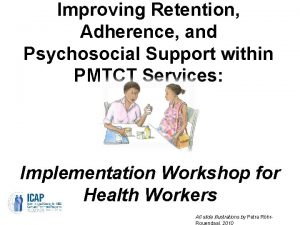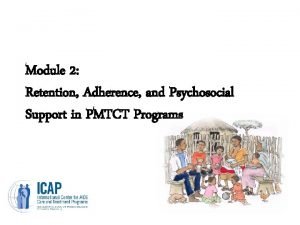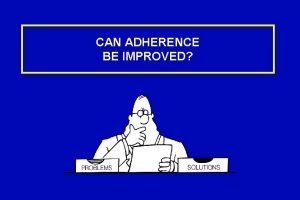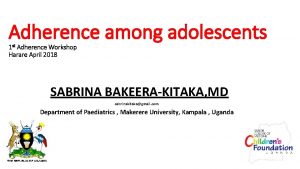Antiepileptic Drug Adherence and Psychosocial Factors in Children




















- Slides: 20

Antiepileptic Drug Adherence and Psychosocial Factors in Children: Is There a Connection? Gwendolyn Avington, DHA, MBA/HCM Louise Underdahl, Ph. D, MPA, MSLS June 10 -14, 2019 Knowledge Without Boundaries Annual Research Summit

Background About Dr. Gwendolyn Avington: • DHA alumna, University of Phoenix College of Doctoral Studies • Research Affiliate – Center for Health and Nursing Research • Author • Family experiences with pediatric epilepsy catalyzed desire to understand chronic diseases, especially epilepsy.

Background About Dr. Louise Underdahl: • Lead Faculty Area Chair - University of Phoenix College of Doctoral Studies - Health Administration • Dissertation chair and committee member • Research Fellow – Center for Health and Nursing Research • 2018 Faculty Excellence Award recipient • Works to empower students’ academic success

Global Context • Epilepsy is a disease marked by repeated seizures affecting millions of adults and children worldwide (Khan et al. , 2010). • In the United States, 2. 2 million individuals have epilepsy, including more than 300, 000 children under the age of 15 years (Epilepsy Foundation, 2013). • The first method of treatment for epilepsy typically includes antiepileptic drug (AED) therapy. Proper use of AEDs can lead to management and control of the symptoms of epilepsy.

Global Context • Previous research has analyzed children’s antiepileptic drug adherence from the perspective of parents and/or caregivers. • This study examined the child’s perspective (N= 34) regarding level of adherence to antiepileptic drug adherence and focused on psychosocial factors (e. g. child knowledge and worry) in children aged 6 -12 years, 13 months after being diagnosed with epilepsy.

Problem • Lack of adherence to prescribed AEDs is a major and costly healthcare problem and it is unclear how the child’s perspective influences AED adherence. • Children experience unique challenges to AED adherence including problems with swallowing medications, disliking the taste, nausea, and weight gain (Modi & Quittner, 2006). • Also, medication side effects, disease severity, and seizure frequency within the first year after diagnosis are issues that may lead to decreased AED adherence.

Problem • Clinicians have used a variety of methods to promote and encourage AED adherence treatment in children diagnosed with epilepsy and their parent/caregivers (Gardiner & Dvorkin, 2006): • Prescribing medications given once or twice daily; • Regular phone contact with the physician; • Information counseling; • Written action plan.

Literature Staniszewska, Smoleńska, and Religioni (2017) found: • Many patients, regardless of age, either forget to take their AEDs as prescribed or cannot afford their AEDs. • 54% of the study participants feared they might become addicted to AEDs over time and modified their prescribed treatment regimen, thus negatively impacting adherence.

Literature • A child’s need for information and concerns about support remain high, even 24 months post diagnosis (Begley et al. , 2000). • Knowledge is a psychosocial factor because the level of knowledge about the chronic disease, complemented by knowledge on the importance of adherence may determine the level of seizure control and wellness. • Decreased knowledge by both parent and child may be linked to worry about diagnosis of illness and its ramifications.

Literature • Research suggests patients’ direct perception of their disorder acts as a decisive factor in their level of adherence to treatment and maintaining health (Ivanova et al. , 2010). • A potential key to reducing healthcare costs associated with improving seizure control and medication adherence is to better understand information of the suboptimal factors that predict poor AED adherence, such as the parent and the child’s knowledge of epilepsy and their worry related to treatment.

Purpose • The objective of this study was to explore possible relationships between child knowledge, worry, and AED nonadherence, defined as doses not taken or taken incorrectly. • Virtually no research focused on a child’s perspective of epilepsy diagnosis, disease-specific knowledge, and magnitude of post-diagnosis worry.

Methodology • A cross-sectional quantitative secondary analysis was used to determine associations between child knowledge and worry/fear and adherence based on self-reported surveys and data from the MEMS® 6 Track. Caps download at the 13 -month clinic visit at a large Children’s Hospital in the Midwestern United States. • MEMS® 6 Track. Caps are electronic monitoring devices that measure the number of times medications are opened by study participants (AARDEX, 2005; Cramer, Mattson, Prevey, Scheyer, Ouellette, 1989)

Methodology • Children with psychological conditions, including attention deficit hyperactivity disorder and learning disorder, were included due to their high levels of comorbidity with epilepsy. • Children and their families were excluded if they had any other developmental disorders (e. g. , autism, Down syndrome) or any other parent-reported comorbid chronic illnesses (e. g. , asthma, diabetes) that required medications.

Methodology • The child’s perspective along with their parent/caregiver’s perspective are important for gaining an understanding of the child’s level of knowledge and worry and its impact on AED nonadherence. • Children in this age group are developing autonomy and possible evolution of beliefs and values that may differ from their parents.

Methodology • Post-epilepsy diagnosis, the relationship between the parent and child should be explored to understand the relationship dynamic as it relates to the responsible and accurate taking of AED medications as prescribed. • As the child assumes more responsibility, the trajectory of the high rate of AED nonadherence and early identification of barriers become increasingly important.

Results • Socioeconomic status based on income may be a predictor of adherence (p = 0. 00004) along with the positive correlation between the child-parent disease-specific knowledge (p = 0. 040). • Further research on parent-child relationships is needed to improve medication adherence.

Results • 50. 9% of children were AED adherent (took their medication as prescribed) one-year post diagnosis • Average child knowledge score was 73. 8% (SD=13. 4%); 38. 2% correctly answered 80% or more of the questions • Child knowledge positively correlated with parent knowledge • Those with higher socioeconomic scores had far better adherence. • Parents with higher income had more worry.

Implications • Poor adherence is one of the leading reasons for pharmacological treatment failure (Shabbir et al. , 2015). • Future studies examining the combined effect of parent and child on adherence are needed. • Better educated parents may increase the child’s knowledge and improve seizure control. • Race and socioeconomic factors must be evaluated. • Recommend interventions targeting children and parents to optimize AED adherence.

Questions?

References Available upon request.
 Antiepileptic drug classification
Antiepileptic drug classification Psychosocial and aesthetic factors
Psychosocial and aesthetic factors Relaxation response technique
Relaxation response technique Antiepileptic side effects
Antiepileptic side effects Mechanism of action of antiepileptic drugs
Mechanism of action of antiepileptic drugs Antiepileptic side effects
Antiepileptic side effects Lamotrigine duration of action
Lamotrigine duration of action Perampanel moa
Perampanel moa Antiepileptic drugs classification
Antiepileptic drugs classification Exercise behavior and adherence
Exercise behavior and adherence Adhérence préputiale traitement
Adhérence préputiale traitement Assemblage démontable schéma
Assemblage démontable schéma Soudure serp
Soudure serp Declakon
Declakon Negative pressure room
Negative pressure room Exhausted drug meaning
Exhausted drug meaning Define physical cognitive and psychosocial development
Define physical cognitive and psychosocial development What are the different routes of drug administration
What are the different routes of drug administration Ph partition theory of drug absorption
Ph partition theory of drug absorption Factors affecting drug absorption biopharmaceutics
Factors affecting drug absorption biopharmaceutics Drug metabolism definition
Drug metabolism definition


